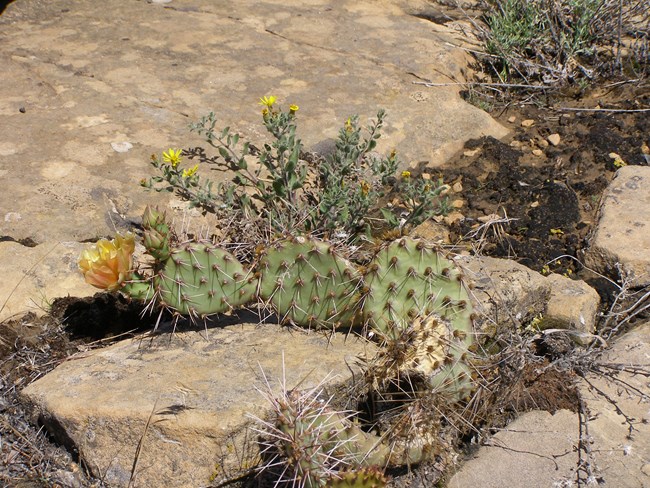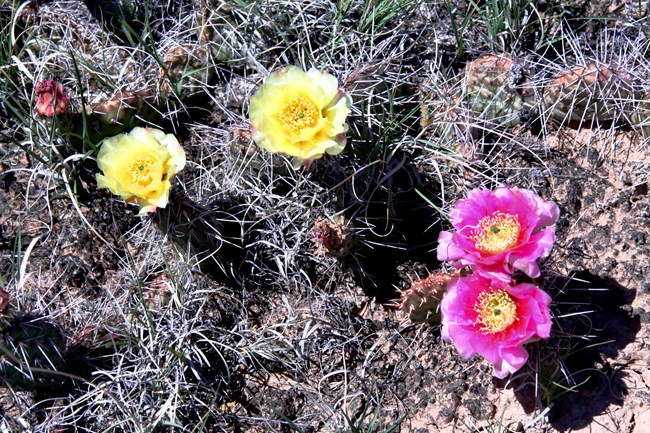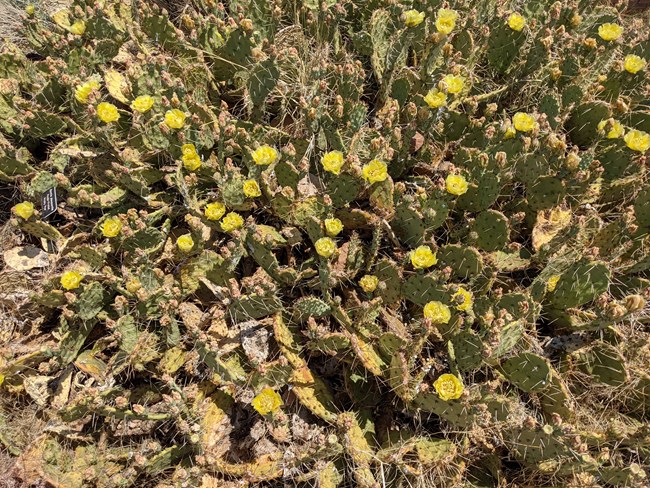
NPS Photo Prickly pear is a type of cactus that is commonly seen in the monument. These cacti are well adapted to desert ecosystems, and prefer sandy, well drained soil. There are several species of Opuntia which are all known as prickly pear, including the purple fruited pricky pear and the potato prickly pear. The range of these species is extensive. Prickly pear can be found growing from Mexico to Canada, and some species grow on the eastern coast of the U.S. as well. It can thrive in a variety of ecosystems, with pads to retain water, spines to protect the plant, and an ability to grow in challenging environments. 
NPS Photo Flowers appear in the summer and can be yellow, pink, violet, bronze, or yellow-green. They are made up of one stigma, which is surrounded by hundreds of touch sensitive stamens. Beetles are one of the main pollinators. When they climb into the flower to forage, the stamens curl in, covering the beetle with pollen. The beetle will then journey on to other flowers, pollinating them as it goes. 
NPS Photo The pads of prickly pear are used as a food source by wildlife too, especially during times of drought. The spiny cacti provide shelter and burrowing sites for rodents. In the summer, the flowers give hikers some welcome splashes of color on the trails. It truly is a versatile plant, able to grow in a range of habitats, and holds a key place in the desert ecosystem. |
Last updated: April 29, 2025
